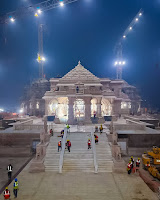The concept of the "best" religion is subjective and varies among individuals. It's essential to respect diverse beliefs and choose what brings meaning and fulfillment to one's life.
Sanatan Dharma proponents may argue it provides a holistic approach to life, emphasizing spirituality, ethical conduct, and harmony with nature, contributing to personal and societal well-being.
Sanatan Dharma, often referred to as Hinduism, is considered by its followers as a comprehensive and timeless way of life, offering a unique set of principles and practices that contribute to individual well-being and societal harmony. While opinions on what makes a religion "best" are subjective, let's explore some perspectives on why Sanatan Dharma is cherished by many.
One key aspect is the philosophical richness embedded in Sanatan Dharma. The Vedic scriptures, including the Vedas, Upanishads, and Bhagavad Gita, delve into profound concepts such as karma (action), dharma (duty/righteousness), and moksha (liberation). These philosophical teachings provide a framework for understanding the purpose of life and navigating its complexities.
Sanatan Dharma's inclusivity is another notable feature. Unlike some rigid religious structures, Hinduism accommodates a vast array of beliefs, practices, and deities. This diversity allows individuals to find their own path within the broader framework of the religion, fostering a sense of personal connection and spiritual fulfillment.
The emphasis on spiritual practices, such as yoga and meditation, is a hallmark of Sanatan Dharma. These practices are not merely physical exercises but are deeply rooted in a spiritual quest for self-realization. Yoga, for instance, encompasses physical postures, ethical guidelines, and meditation, promoting holistic well-being.
Environmental consciousness is woven into the fabric of Sanatan Dharma. The reverence for nature is evident in the concept of "Vasudhaiva Kutumbakam" (the world is one family) and the recognition of divinity in various elements of the natural world. This eco-friendly perspective aligns with the growing global awareness of environmental sustainability.
The principle of ahimsa, or non-violence, is another integral part of Sanatan Dharma. It goes beyond refraining from physical harm and extends to non-violence in thought and speech. This emphasis on compassion and understanding contributes to fostering peaceful coexistence.
The societal aspect of Sanatan Dharma is reflected in the concept of varna and ashrama, which outline a system based on one's natural qualities (guna) and stages of life (ashrama). While this system has been interpreted and practiced in various ways, its original intent was to guide individuals in a manner that aligns with their inherent strengths and the different phases of their lives.
Sanatan Dharma also recognizes the importance of seva, or selfless service, as a means of contributing to the welfare of society. This emphasis on social responsibility encourages individuals to actively engage in philanthropy and community service.
Despite these positive aspects, it's crucial to acknowledge that interpretations and practices within Sanatan Dharma can vary widely. Additionally, the notion of what constitutes the "best" religion is subjective, and individuals find meaning and purpose in various belief systems. Respect for diversity of thought is essential in fostering understanding and harmony among people of different religious backgrounds.






Comments
Post a Comment